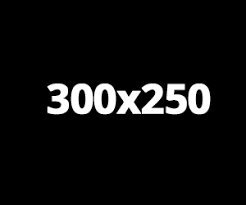Canada’s Express Entry system has long stood as a beacon of hope for skilled workers and their families aspiring to secure permanent residency in one of the world’s most welcoming nations. With its points-based structure and regular draw invitations, Express Entry offers a clear pathway for talented individuals looking to begin a new chapter in Canada. Each draw typically occurs biweekly, granting ITAs (Invitations to Apply) to candidates with the highest Comprehensive Ranking System (CRS) scores.
However, as of April 11, 2025, an unexpected freeze in draw activity has caused considerable concern among candidates and immigration professionals alike. The last draw took place on March 21, 2025, a pause that breaks the anticipated rhythm of regular draws, leaving many in limbo and exacerbating uncertainty in an already complex immigration landscape.
The ongoing hiatus has spurred speculation about its underlying causes. Are there technical glitches at play, such as issues with recalibrating CRS scores following the removal of arranged job offer points? Might this pause reflect broader policy shifts, administrative complications, or possible political considerations as Canada navigates ongoing election campaigning, where immigration is a critical talking point? Without official confirmation from the Immigration, Refugees and Citizenship Canada (IRCC), the reasons behind this disruption remain a matter of conjecture. Let us delve into the most plausible explanations for this unexpected delay.
The Last Draw: A Snapshot from March 21, 2025
The March 21 draw was notable not simply for its timing but also for its generous provisions:
- Invitations Issued: 7,500 ITAs.
- CRS Cut-Off Score: 379.
- Category: French language proficiency, aligning with Canada’s commitment to enhance Francophone immigration outside Quebec.
This draw marked a significant opportunity, particularly for those with proficiency in the French language, who found themselves more favorably positioned amid the inclusivity of this round. Interestingly, candidates noted the unusual nature of three consecutive French-only draws, leading many to anticipate a follow-up draw around April 4, 2025, with further expectations set for April 18. Alas, expectations have been dashed as the IRCC has yet to issue new invitations since the last draw, resulting in heightened anxiety among hopeful applicants.
Possible Reasons for the Express Entry Draw Delay
In the absence of a formal explanation from the IRCC, the community of immigration stakeholders is left to speculate about the reasons behind this hiatus. Below, we explore five feasible hypotheses surrounding this unusual delay.
1. Technical Issues, Including CRS Score Recalibration
One plausible explanation for the current draw freeze lies in technical difficulties. Reports have surfaced indicating complications with the CRS calculator—especially following the recent decision to remove points associated with arranged job offers. This modification could significantly alter candidates’ scores and rankings.
Additionally, IRCC’s plan to increase the French language proficiency points from 50 to 75 necessitates recalibrating the scores of a vast number of existing profiles. Given the complexity of such updates, a technical pause may have been deemed prudent to ensure the integrity of the CRS framework. Errors in score calculation or alignment could undermine the reliability of the entire process, prompting the IRCC to halt draws until they can assure accurate recalibrations.
2. Political Caution During Election Campaigning
The political climate in Canada adds another layer of complexity to this situation. As election campaigning unfolds, immigration continues to be a hot-button issue with public sentiment often divided. Consequently, the Liberal government may be exercising caution regarding further draws to avoid inflaming voter anxieties and criticism associated with high immigration levels.
Issuing new invitations during this sensitive time could lead to headlines such as “Canada Invites Thousands of New Permanent Residents,” potentially drawing negative public backlash. Thus, the IRCC’s decision to pause draws could reflect an attempt to sidestep fueling controversy until after critical electoral checkpoints, such as April 28, 2025, when campaign pressures might begin to ease.
3. Policy Implementation for 2025 Priorities
In February 2025, the IRCC announced new category-based selection priorities aimed at addressing specific economic needs, particularly in education, healthcare, and skilled trades. Integrating these new categories—along with potential adjustments to selection algorithms or testing for new occupation criteria—could necessitate temporary halts in draws. This pause allows the IRCC to ensure compliance with the evolving labor market demands while carefully balancing general versus category-based draws.
4. Administrative Adjustments
Routine administrative tasks may also be influencing the current situation. The management of the Express Entry pool involves extensive operations; therefore, periodic internal reviews, audits for compliance, or preparations for anticipated surges in application volumes might require temporary suspensions of draw activities. Though these operations may not be visible to the public, their necessity is critical to maintaining the system’s fairness and efficiency.
5. Strategic Alignment with Immigration Goals
Finally, the IRCC might be strategically calibrating draws to coincide with Canada’s 2025-2027 Immigration Levels Plan. This ambitious initiative aims to welcome 395,000 new permanent residents in 2025 while addressing the pressing issues of housing and infrastructure. The IRCC may be prioritizing specific groups, like the Canadian Experience Class (CEC) and Provincial Nominee Program (PNP) candidates, aligning draws strategically to fill specific labor market gaps while also managing public expectations regarding immigration levels.
Impact on Candidates and CRS Cut-Off Scores
The ongoing pause in Express Entry draws since March 21, 2025, has caused a ripple effect among candidates, breeding uncertainty and necessitating shifts in strategy as they navigate the competitive pool. For those with CRS scores close to recent cut-off scores, the absence of draws can be particularly unsettling. A prolonged wait for invitations might jeopardize their pathways to permanent residency, especially for individuals with work permits nearing expiration or those with new job offers in flux.
This freeze has also led to a psychological impact, leading many aspiring immigrants to question the stability and reliability of a system previously characterized by consistent, predictable rhythms. Compounding matters, the delay generates larger dynamics within the candidate pool. As more candidates seek entry into the Express Entry system during this hiatus, competition for limited ITAs could eventually intensify, pushing CRS cut-off scores higher. If draws resume with higher numbers of applicants possessing robust profiles—such as improved language scores or additional work experience—the expectation is that cut-off scores could revert to previous levels exceeding the 520 mark.
The perplexing situation also compels candidates to remain proactive; whether that means retaking language tests to maximize their CRS points, exploring provincial nominations for boosts in points, or simply keeping abreast of IRCC updates. Staying engaged with the ongoing narrative is vital, as the landscape of Express Entry may shift significantly once draws resume, potentially rewarding those who can respond effectively to evolving criteria.
The current pause reflects the myriad challenges associated with managing Canada’s immigration framework, intertwining technical, political, and administrative aspects in handling a dynamic system. The multi-dimensional nature of this standstill presents ongoing challenges, yet the resilience and resourcefulness displayed by candidates navigating these changes are testimony to the dynamic relationship between Canada’s immigration policies and the individuals striving for new beginnings within its borders.




